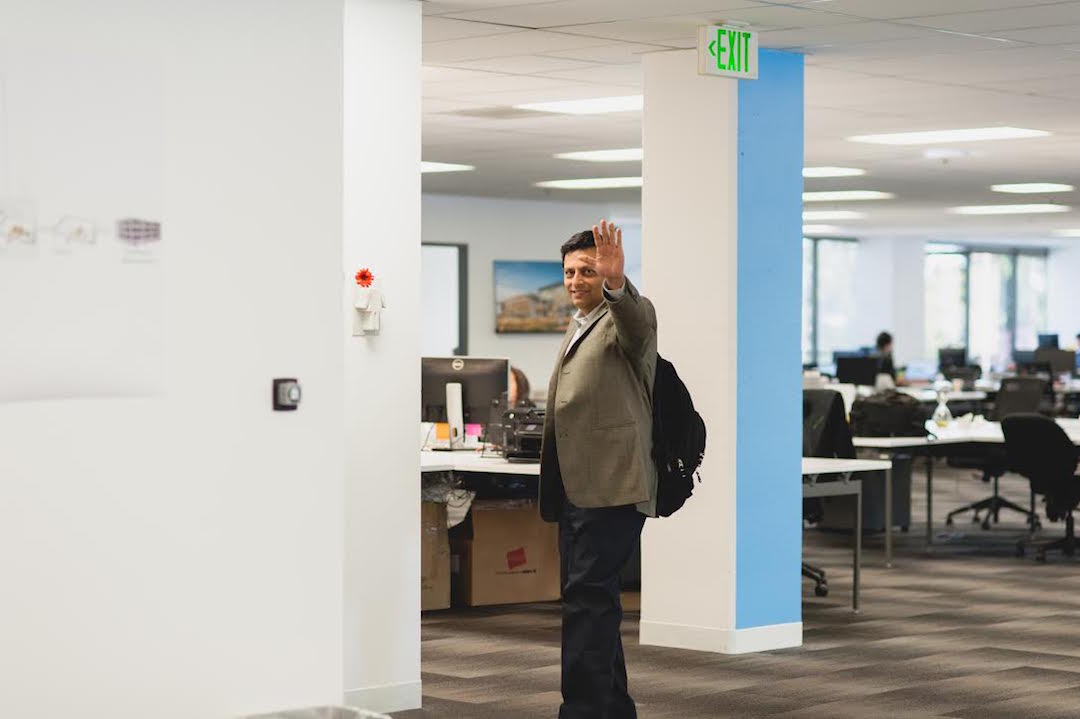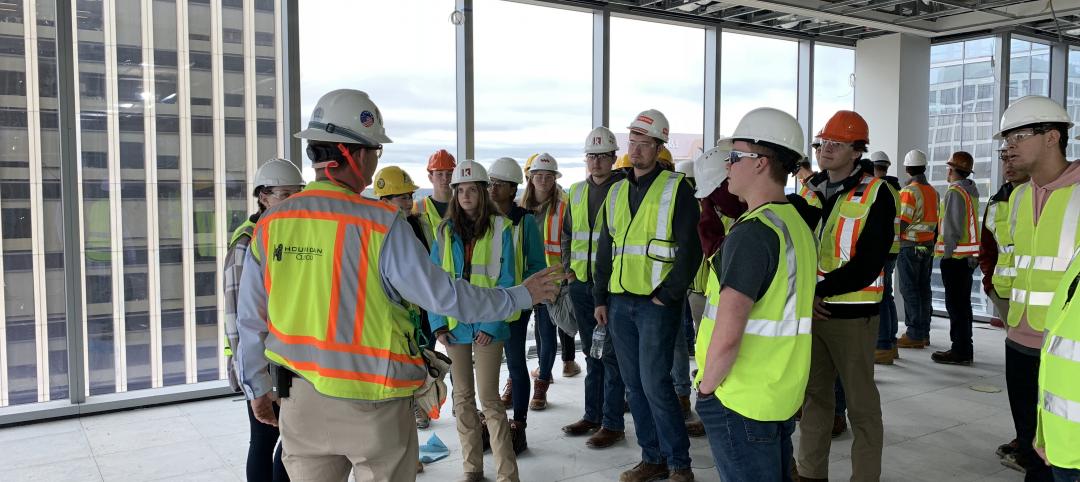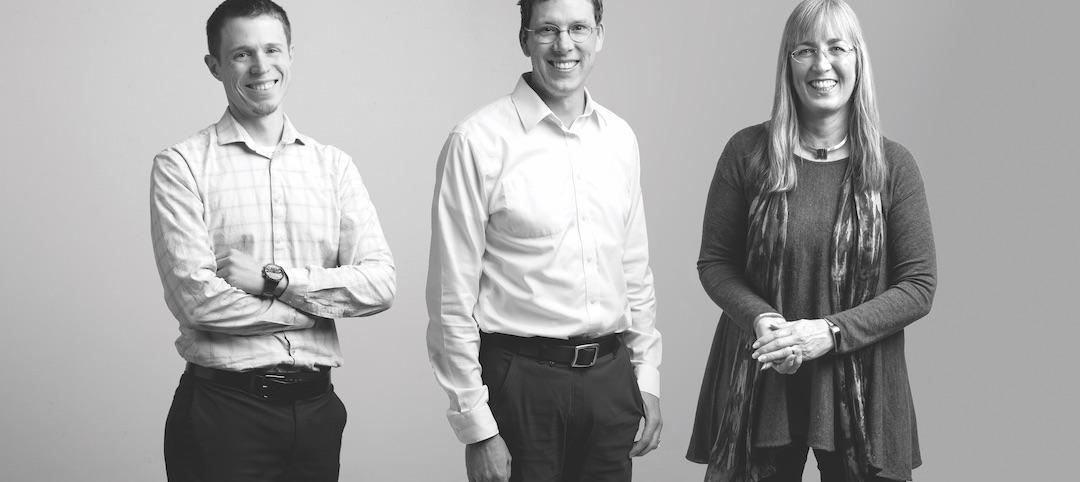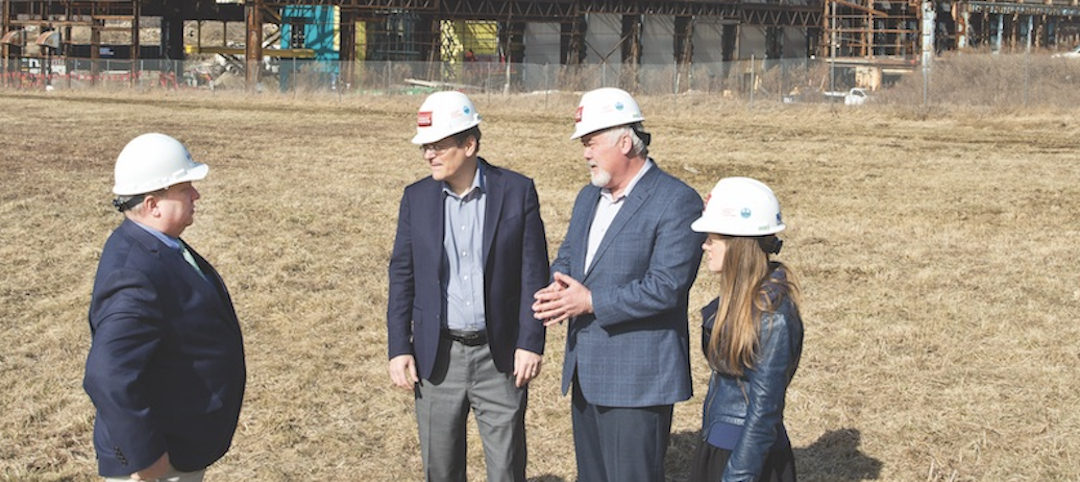For the first several weeks of 2018, Deepak Aatresh was in India working with a client on a one million-sf-plus healthcare network that is being designed with technology developed by Aditazz, which Aatresh co-founded in 2010 and is its CEO.
The Brisbane, Calif.-based firm is attempting to bring building design to a new frontier with computational software that uses algorithms to help clients complete large-scale and complex projects in less time, at lower cost, and with more efficient operations.
“Our vision is to fully automate the design delivery process,” says Agnessa Todorova, AIA, NCARB, Aditazz’s Senior Director of Product Management.
Chuck Han, the firm’s Vice President of Technology Solutions, adds, “What we’re trying to do to design is what spreadsheets did for accounting: we’re getting rid of the mundane, and providing higher value.”
Since its launch, Aditazz has raised about $40 million in venture capital. Its technology has been used to help complete three projects, with another six under construction, 18 in design, and nearly 50 in the early stages of design.
Based on its work so far, Aditazz claims that its technology can improve design and construction productivity by 30%, reduce upfront costs by 10%, and provide clients with 10% operational savings.
The India project—which “is putting our technology through its paces,” Aatresh says—is critical to his company’s ability to back up those performance claims and to demonstrate how its products can optimize a building’s functionality. By doing so, it might win over skeptics within the AEC industry, especially in North America, who aren’t quite prepared yet to fully embrace digital innovation that, as some designers probably fear, could automate them out of a job.
To ease those anxieties and to get more designers to try its products, Aditazz last September introduced a Web-based software as a service (SaaS) app, with a flat user fee, for projects outside of the healthcare arena. Aatresh tells BD+C that his company, which began as a professional services provider with in-house delivery capability, is now “opening its technology platform for other developers and designers to use.”
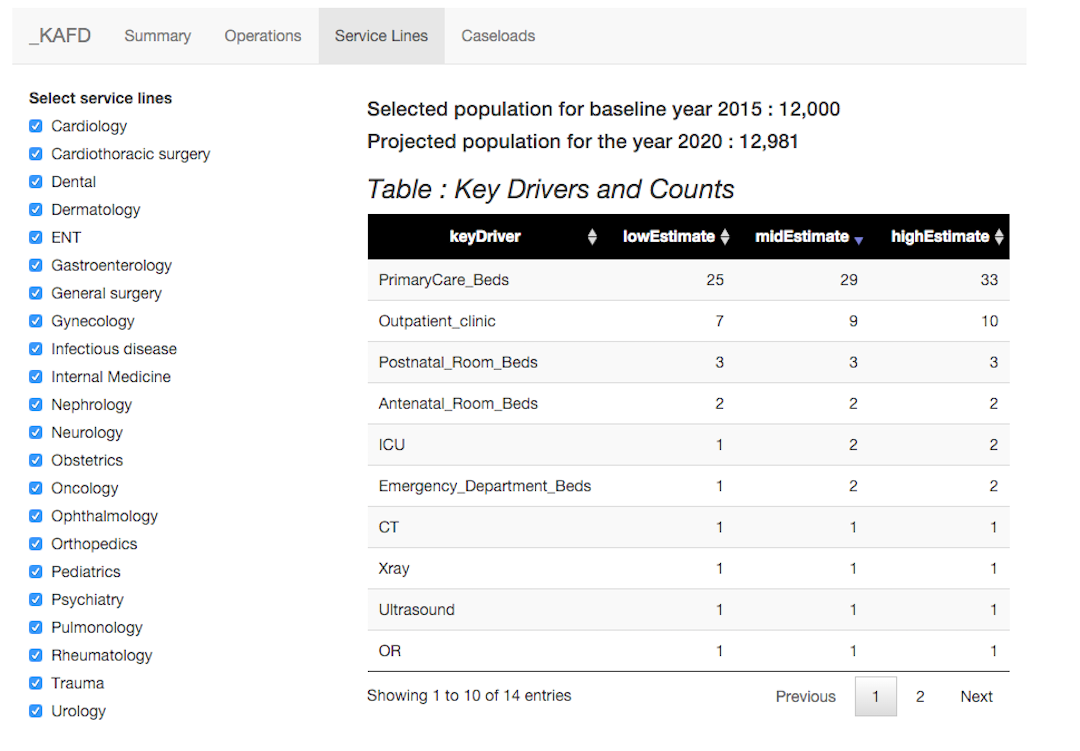 For the healthcare facility within Saudi Arabia’s $10 billion King Abdullah Financial District, Aditazz used its Operational Modeling Application to determine the optimal number of beds, rooms, and equipment needed based on the projected population. Courtesy Aditazz.
For the healthcare facility within Saudi Arabia’s $10 billion King Abdullah Financial District, Aditazz used its Operational Modeling Application to determine the optimal number of beds, rooms, and equipment needed based on the projected population. Courtesy Aditazz.
Drawing from digital libraries
Aditazz’s origin story began in 1989, when Aatresh joined Intel as a computer chip designer. High-tech defined his career over the following two decades, with seven years at Intel designing microprocessors; management positions at Lucent Technologies and Riverstone Networks; and involvement in two tech startups.
Aatresh’s eureka moment, though, was of a lower-tech variety: a time-lapse video of a construction site. Watching it gave him the insight that building structures wasn’t all that different from making computer chips—except for the fact that the actual construction industry had remained antediluvian in its methods.
By the time he joined Artiman Ventures, a venture capital firm, as its entrepreneur-in-residence in 2008, Aatresh was contemplating another tech company, this one driven by computational software that would integrate architecture, design, and construction in ways that reduce reiteration, time, and costs.
Using seed money from Artiman, Aatresh co-founded Aditazz—which in Sanskrit roughly translates to mean “from the beginning”—with Zigmund Rubel, AIA, a licensed architect and board member with the Center for Innovation in the Design and Construction Industry. Rubel is Aditazz’s Chief of Building Sciences and Design Services.
Borrowing from integrated chip and circuit design methodologies, Aditazz’s platform uses computer algorithms to create digital libraries with different spatial patterns that are governed by design rules based on such factors as a client’s requirements and local building codes.
“We create a functional description of a building, and use a compiler to create the design,” Aatresh explained in an interview with IEEE Spectrum last September.
By codifying this organizational knowledge, Aditazz’s software can optimize different complex scenarios, choose which one works best for the client’s purposes, and then elevate the value of the project through continuous design improvements.
“The final output is not only a BIM model that can be further processed and modified with standard software, but also a set of metrics for the building, including likely capital expenditure and operational expenditure, required quantities of building materials, and operational performance,” wrote Boston Consulting Group in a 2016 paper on the company it prepared for the World Economic Forum.
In one of its early design projects, Shantou University Cancer Hospital, in China, Aditazz’s platform lowered that project’s CAPEX by $10 million by improving the hospital’s operational efficiency and rightsizing the layout in its surgery and oncology departments. The number of beds was reduced to 540 from the 900 originally proposed, linear accelerators to eight from 11, and operating theaters to 10 from 17. The project is scheduled for completion in 2019.
Overcoming objections
Aditazz is unique among design services providers, says Rubel, because it maintains a nearly 1:1 ratio of in-house software developers and what he calls “domain experts”—architects, medical planners, engineers, and builders.
Winning the hearts and minds of the broader AEC community in favor of Aditazz’s products has been an uphill climb. It has been stymied by three fundamental obstacles, says Rubel: cultural resistance among designers beholden to current methods and wary of new ideas; the lack of a clear path to monetizing investment in computational designing; and the lack of standardization to use computers for design thinking.
“AEC firms often don’t have time to explore new technologies,” says Todorova. “Budgets are tight and it’s just about meeting deadlines.”
But Todorova also thinks that designers’ fears about automation threatening their livelihoods and creativity are misplaced. “A lot of what designers do these days is draw and redraw, make mistakes and correct them. Why not automate at least some of this process?”
Han acknowledges that because the industry remains “fragmented,” it lacks a centralized core of data. To that end, Aditazz now offers a Web-based app that allows designers to bring information into their own applications via an API (application program interface). “We can get data to people in the form they are most comfortable with,” says Aatresh.

Opportunities in several sectors
Rubel is optimistic about the power of computation and automation to change the course of building design. He thinks it’s only a matter of time before “we will be able to ask a computer a question and it will find the answer”—ala Apple’s Siri and Amazon’s Alexa.
Right now, Aditazz is focusing on Asia to expand its platform. Its growth objectives will require more capital, says Aatresh. And the company remains open to potential business alliances such as that which Aditazz struck a year ago with Atkins—a global design, engineering, and project management consultant—to use Aditazz’s technology to optimize the planning and design of offshore wind farms.
“The Aditazz platform gives us a unique way of bringing together all the disparate information that you get when designing an offshore wind farm, and combining that data in a manageable way,” says Martin Grant, CEO of Atkins’ Energy business. “Ultimately, this leads to better, faster decision making, helping to reduce cost and risk.”
Beyond healthcare, Aditazz sees opportunities to become a leading technology provider for the energy and industrial sectors. Longer term, it is looking to expand its reach into hospitality, large-scale multifamily, mixed-use retail, and office construction.
“This is not the time to be pulling back on growth,” says Aatresh.
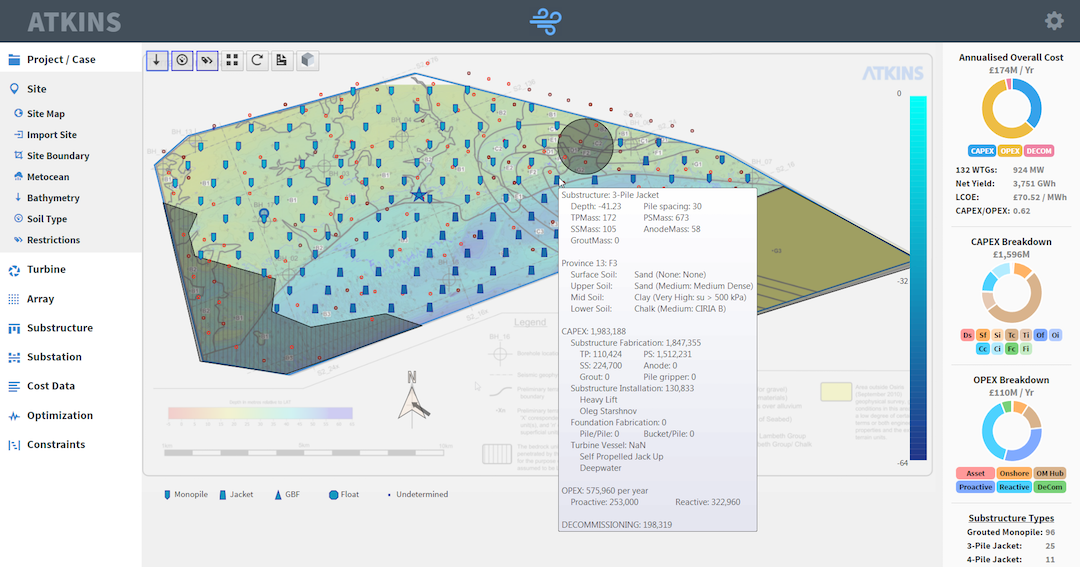 Aditazz recently joined forces with Atkins, a global design, engineering, and project management firm, to use Aditazz’s technology to plan and design offshore wind farms more efficiently.
Aditazz recently joined forces with Atkins, a global design, engineering, and project management firm, to use Aditazz’s technology to plan and design offshore wind farms more efficiently.
Related Stories
Women in Design+Construction | Jan 25, 2024
40 Under 40 Class of 2023 winner Kimberly Dowdell inaugurated as AIA 2024 President
The American Institute of Architects (AIA) has announced the inauguration of Kimberly Dowdell, AIA, NOMAC, NCARB, LEED AP BD+C, Principal and Director of Strategic Relationships at HOK and BD+C 40 Under 40 superstar, as its 100th president.
AEC Innovators | Mar 3, 2023
Meet BD+C's 2023 AEC Innovators
More than ever, AEC firms and their suppliers are wedding innovation with corporate responsibility. How they are addressing climate change usually gets the headlines. But as the following articles in our AEC Innovators package chronicle, companies are attempting to make an impact as well on the integrity of their supply chains, the reduction of construction waste, and answering calls for more affordable housing and homeless shelters. As often as not, these companies are partnering with municipalities and nonprofit interest groups to help guide their production.
AEC Innovators | Feb 28, 2023
Meet the 'urban miner' who is rethinking how we deconstruct and reuse buildings
New Horizon Urban Mining, a demolition firm in the Netherlands, has hitched its business model to construction materials recycling. It's plan: deconstruct buildings and infrastructure and sell the building products for reuse in new construction. New Horizon and its Founder Michel Baars have been named 2023 AEC Innovators by Building Design+Construction editors.
40 Under 40 | Oct 19, 2022
Meet the 40 Under 40 class of 2022
Each year, the editors of Building Design+Construction honor 40 architects engineers, contractors, and real estate developers as BD+C 40 Under 40 awards winners. These AEC professionals are recognized for their career achievements, passion for the AEC profession, involvement with AEC industry organizations, and service to their communities.
Movers+Shapers | Nov 7, 2021
Passage of $1.2 trillion infrastructure bill expected to spur stronger construction activity
AEC firms see federal investment as historic
Movers+Shapers | Apr 30, 2020
College programs help prepare students for careers in the construction industry
Universities with AEC programs hone their curricula and research to prepare students to hit the ground running in the construction industry.
Movers+Shapers | Apr 21, 2020
Management Training: AEC firms bring students into the real world
Students benefit substantively from internships offered by AEC firms.
Movers+Shapers | Apr 17, 2020
Meet the ‘AEC outsiders’ who are helping to push the industry into the new decade
AEC professionals have enough on their plates without becoming specialists in a new skill outside of their wheelhouse.
Movers+Shapers | Apr 15, 2020
Buildings as "open source platforms"
NBBJ’s year-old Design Performance Group helps building teams make smarter choices earlier.
Movers+Shapers | Apr 23, 2019
Steely resolve: Carnegie Mellon University fuels Pittsburgh's post-industrial reinvention
After the steel industry started collapsing in the late 1970s, Pittsburgh has been reinventing itself as a science, medical, and academic hub.


